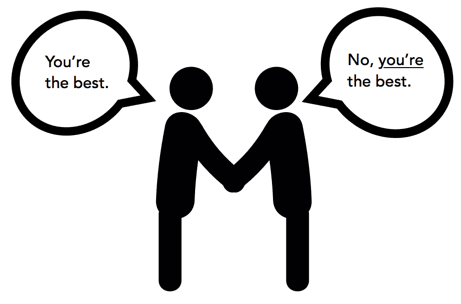How to get well-developed IT solution
You can download raw Markdown file in blog repository on github.
Goal of the note
- Develope better it solution
- Сlarify requirements
- Determine the importance and urgency
Client-developer relationship
The importance of a culture of client-developer relationship

Client goals
- Good: You need to ensure a maximum lead time of 30 minutes
- Good: Inform the client about significant stages of the order
- Bad: Add the field to the table
Developer goals
- Good: We need to use outsource for this task
- Good: This employee will be underutilized
- Bad: It's not worth attracting customers this way, no one does like this
Developer role
+-----------------------------------------------+
|Company strategy, business goals, markets, etc.|
+------------------------+----------------------+
|
v
+------------------------+----------------------+
| Tasks, problems, clients |
+------------------------+----------------------+
|
v
+------------------------+----------------------+
| IT developer |
+------------------------+----------------------+
|
v
+------------------------+----------------------+
| Classes, functions, queue, dicts, etc. |
+------------------------+----------------------+
|
v
+------------------------+----------------------+
| Server, code base, ci/cd pipeline |
+-----------------------------------------------+
Domain-Driven Design Reference: Definitions and Pattern Summaries
Eric Evans
Clean Code: A Handbook of Agile Software Craftsmanship
Robert C. Martin
Specification example
Original assignment
Briefly but succinctly state the prerequisites for creating a product.
Business opportunities
How solving these problems will help business.
Business goals
Define countable business goals.
Success criteria
In which the project will be considered successful
Vision of the solution
How it will differ from those existing on the market.
Business risks
Describe the potential problems and risks that are currently understood.
Assumptions and dependencies
Indicate what important assumptions are accepted as true.
Main functions
Indicate main system functions without roles.
MVP
Describe the minimum product, less than which there is no point in making it.
Versions
Describe at least 2 next versions you intend to release within the product.
Limitations and exclusions
Describe the deliberate limitations we are aware of.
Roles
Define all kind of roles involved in product development.
Template for roles definition:
- Value:
- Attitude:
- Interest:
- Restrictions
Project priority
Describe the project in terms of functions, quality, timing, costs and personnel.
Functions
All MVP functionality have to be performed.
Quality
All safety tests must be performed. 80% of use cases should be covered by autotests.
Timing
The mvp version should be released on exact date, maximum delay period is 3 weeks.
Costs
Not need to purchase of third-party software or services.
Personnel
Estimated team composition: 1 developer, 1 designer, 0.5 tester
Use cases
Describe product use cases for each involved roles.
One of the most difficult part, add more references!
DDD Building blocks
- Entity
An object that is not defined by its attributes, but rather by a thread of continuity and its identity.
Example: Most airlines distinguish each seat uniquely on every flight. Each seat is an entity in this context. However, Southwest Airlines, EasyJet and Ryanair do not distinguish between every seat; all seats are the same. In this context, a seat is actually a value object. - Value object
An object that contains attributes but has no conceptual identity. They should be treated as immutable.
Example: When people exchange business cards, they generally do not distinguish between each unique card; they are only concerned about the information printed on the card. In this context, business cards are value objects. - Aggregate
A collection of objects that are bound together by a root entity, otherwise known as an aggregate root. The aggregate root guarantees the consistency of changes being made within the aggregate by forbidding external objects from holding references to its members.
Example: When you drive a car, you do not have to worry about moving the wheels forward, making the engine combust with spark and fuel, etc.; you are simply driving the car. In this context, the car is an aggregate of several other objects and serves as the aggregate root to all of the other systems. - Domain Event
A domain object that defines an event (something that happens). A domain event is an event that domain experts care about. - Service
When an operation does not conceptually belong to any object. Following the natural contours of the problem, you can implement these operations in services. See also Service (systems architecture). - Repository
Methods for retrieving domain objects should delegate to a specialized Repository object such that alternative storage implementations may be easily interchanged. - Factory
Methods for creating domain objects should delegate to a specialized Factory object such that alternative implementations may be easily interchanged.
Conclusion
Generated on previous steps artifacts and other software quality attributes define stack and implementation.
FURPS: Functionality, Usability, Reliability, Performance, Supportability
+---------+ +---------------------------+
|Artifacts+---+ +-->+Stack selection |
+---------+ | +-------------------+ | +---------------------------+
+-->+System architecture+---+
+---------+ | +-------------------+ | +---------------------------+
|FURPS +---+ +-->+Classes, methods, services,|
+---------+ |graphs, integrations |
+---------------------------+
 Data driven
Data driven
Comments
comments powered by Disqus